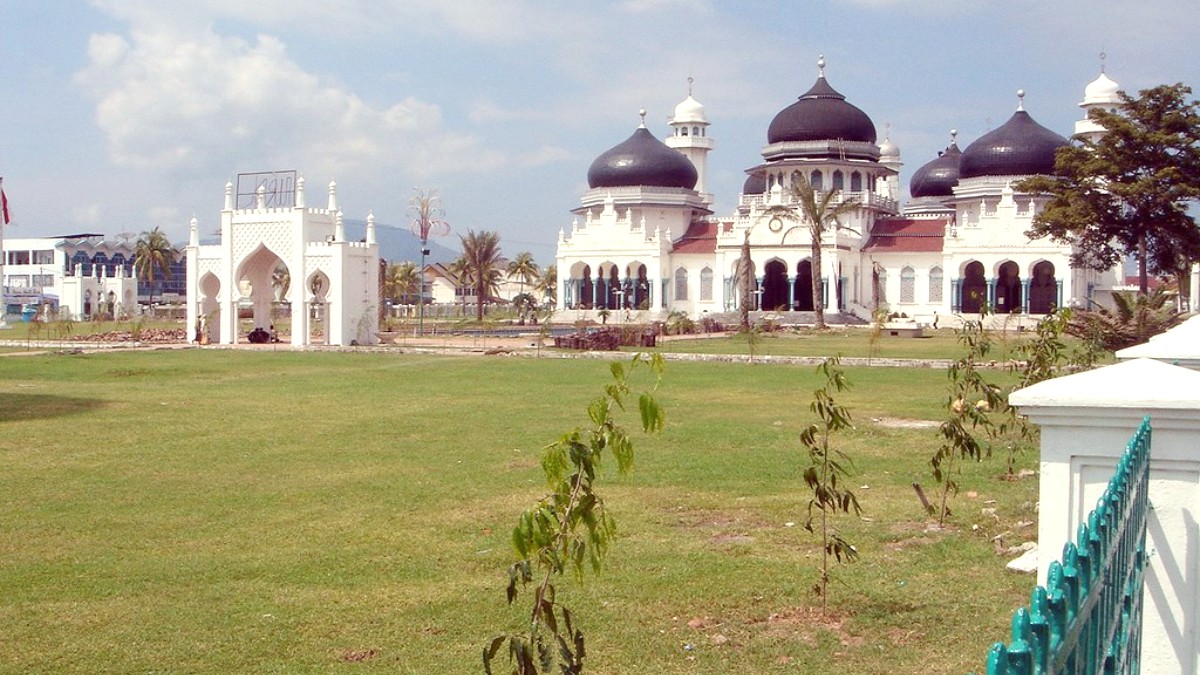
Sumatra, Indonesia
These landmarks are symbols of Banda Aceh's spiritual heart, its resilience, and the power of nature. They offer a deep look into the region's past and present.
Each site has unique stories and visual appeal, from grand architecture to stark reminders of the 2004 tsunami.
For capturing wide-angle shots or detailed close-ups, a [DJI Osmo Mobile 6 Gimbal Stabilizer](https://www.amazon.com/s?k=DJI+Osmo+Mobile+6+Gimbal+Stabilizer) greatly upgrades smartphone video and photo quality.
Focuses on the 2004 tsunami; documents impact and acts as a powerful memorial.
Oldest museum in Indonesia, showcases Acehnese cultural artifacts, traditional weapons, textiles, relics from Sultanate era.
Small exhibition area at ship site detailing tsunami and ship's journey inland.
Formal art galleries are limited. No prominent cultural centers exist with regular public performances for tourists.
Often appear on a community-based level or during specific festivals. Ask locals about any events.
Banda Aceh's past comes alive through its historical sites, revealing layers of royal power and resistance.
Walk around the old city center to see remnants of colonial-era buildings alongside traditional Acehnese architecture.
Baiturrahman Grand Mosque is the most significant. Numerous smaller mosques throughout the city hold local significance.
Simple yet powerful monument near the port, commemorating tsunami victims and bringing a quiet space for reflection.
Unique monument and royal garden built by Sultan Iskandar Muda for his queen, a symbol of longing and private recreation.
A park featuring a statue of the Sultan, spotlighting the military history and legacy of the Sultanate.
Several mass graves from the tsunami are around Banda Aceh, serving as solemn, humble reminders of immense loss.
Walk around the old city center to see remnants of colonial-era buildings alongside traditional Acehnese architecture. These buildings narrate stories of past eras.
Gunongan and Taman Sari reveal layers of royal power and leisure from the Sultanate era. Their unusual shapes spark curiosity.
The Tsunami Museum, Kapal PLTD Apung, and Aceh Boat on the Roof offer powerful, poignant reflections on the 2004 disaster.
These sites reveal aspects of Aceh's past beyond its royal and spiritual life, including its long struggle against colonial rule.
While Banda Aceh is a city, its coastal location brings access to natural beauty.
Green spaces for relaxation and contemplation.
Coastal areas offer expansive ocean views, especially at sunset. For wildlife, travel further into Aceh province.
The closest beach to the city, popular for sunsets and boasting numerous seafood stalls.
A good choice for an evening stroll and fresh seafood.
A beautiful white-sand beach west of Banda Aceh. It recovered largely from the tsunami. Known for calm waters.
A pleasant spot for a daytime beach visit.
Adjacent to Lampuuk. Known for surfing during the seasonal surf season and has a more rugged coastline.
A river runs through the city, offering some scenic views.
A bustling hub for fresh produce, spices, meat, fish, and daily necessities. Excellent for cultural immersion and observing local commerce.
A fishing boat landed atop a house during the 2004 tsunami, another poignant memorial illustrating the disaster's force.
Authentic social experience. Spend time observing locals, sipping traditional coffee, and soaking in the atmosphere.